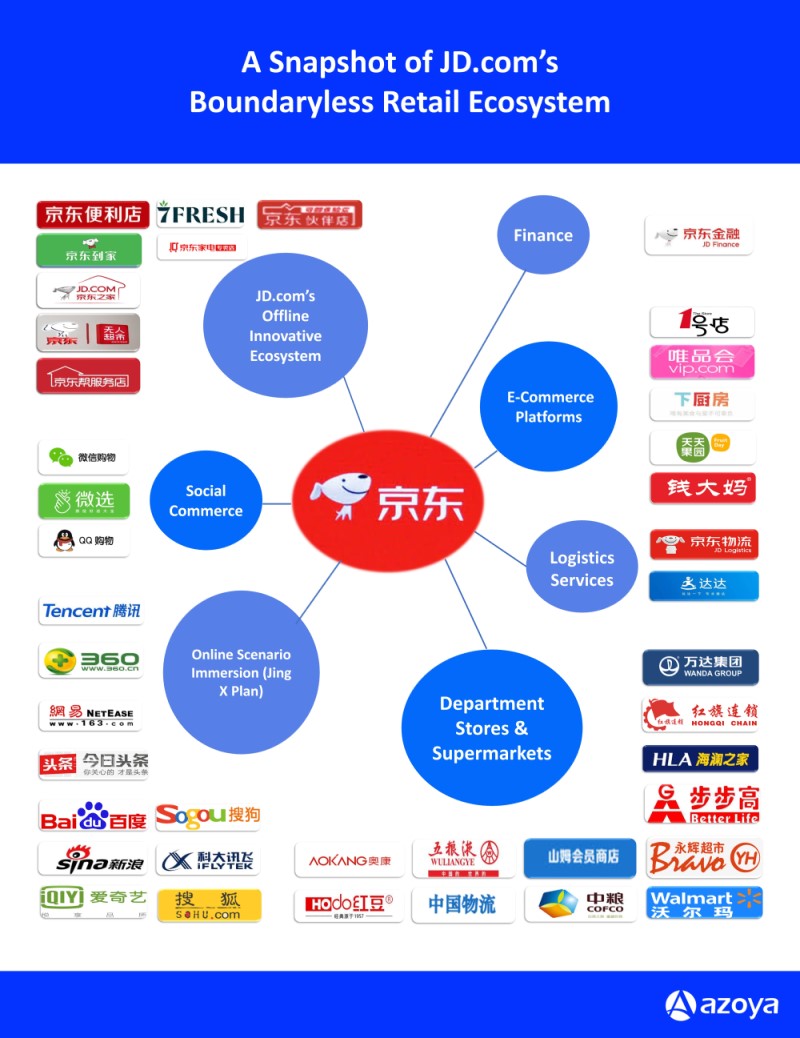What JD.com's New 50,000 sqm Store Says About the Future of China E-Commerce
JD.com's sprawling new complex in Chongqing reflects its future ambitions for omnichannel retail
by Ker Zheng
On Singles Day this year, China's largest online retailer JD.com launched a 50,000 sqm superstore in Chongqing.
Nicknamed the E-Space store, the massive, 5G-equipped high-tech complex is designed to flex JD.com's strengths in retail technology, logistics, and services.
Over 30,000 customers crammed into the store, purchasing over 10 million RMB worth of products that day.
We take a deeper look at the E-Space store and how it reflects JD.com's future vision for omnichannel retail.

JD.com's E-Space Store Grand Opening in Chongqing. Source: JD.com Twitter account
A True Omnichannel Experience
The E-Space store displays over 1,500 brands and 200,000 items across electronics, furniture, home appliances, and smaller categories such as health & wellness, beauty, books, and daily necessities.
It is split amongst 7 different zones and 55 interactive experience zones, with smart robots designed to guide customers to the right area.
This layout gives JD.com an opportunity to provide a unique offline retail experience that can't be replicated online.
For example, the store hosts Apple's largest authorized offline experience store, a Microsoft smart home experience area, and GE's first omnichannel home appliances store in China. There's a special floor designed for immersive virtual reality video games, and there are JD Home sections that display white goods appliances and furniture in different living scenarios.

Gamers inside JD.com's E-Space Store. Source: JD.com
Such a store format is designed to give customers a better sense of what products would look like at home.
To merge these experiences with its e-commerce business, JD.com has equipped each item's price tag with a QR code that customers can scan to order online, through JD.com's WeChat mini-program.
These smart price tags are electronic, meaning that prices can be updated remotely to keep up with online price changes on JD.com's e-commerce platform.
Such an omnichannel model is important for large purchases such as washing machines and furniture, especially in a lower-income city such as Chongqing.
Customers may be more hesitant to make these purchases as they may account for a large chunk of their monthly salaries. The customer journey is longer; shoppers might see a product in a store but wait several days or weeks to make a final decision.
But with JD.com's model, once that decision is made, the products can be delivered within 24 hours, complete with installment & repair services.
In this sense, JD.com is providing multiple touchpoints between the merchant and the customer, as well as a full end-to-end service.
This business model is designed to help JD.com differentiate from other retailers who may sell the same brand but lack the same capabilities in technology, logistics, and services.

JD.com's E-Space Store in Chongqing. Source: Marketing Interactive
How the JD E-Space Store Fits into JD.com's Boundaryless Retail Strategy
Boundaryless retail is meant to be JD.com's response to Alibaba's New Retail strategy.
Boundaryless retail leverages technology, big data, and cloud computing to merge offline retail with online e-commerce, sharing data and traffic to provide an optimized omnichannel experience.
The premise is that the typical marketplace e-commerce model where customers search for their products on a platform is seeing slowing growth.
For future growth, players will have to look towards decentralized e-commerce, where new customers discover new products through online content partners and offline retail/experience centers. The E-Space store is just one example, but other examples include JD.com's convenience store chain, its fresh fruit partner chain 7Fresh, and larger retailer partners such as Yonghui Superstores and Wal-Mart.
After hooking in new customers, JD.com can then upsell them with its online e-commerce capabilities. This is particularly important in China's smaller cities where e-commerce is less prevalent and older users are less tech-savvy.

Key Takeaways
1. JD.com's 50,000 sqm E-Space store in Chongqing is its largest-to-date and is designed to flex its omnichannel retail capabilities.
2. The store consists of various experience centers that display products in scenario-specific formats, giving customers a better sense of what they look like at home. Customers can scan QR codes and make purchases on WeChat, with the products shipped to their home within 24 hours.
3. The E-Space store reflects JD.com's Boundaryless Retail strategy, which leverages advanced logistics, technology, and services to provide additional value for its customers.